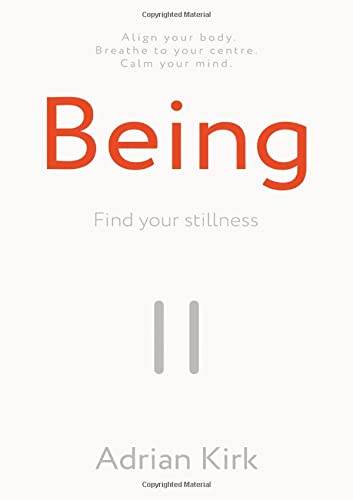How to master the trickiest of public speaking platforms
Speaking on stage can be an uncomfortable experience, even for those of us who are trained to be on stage; so what’s it like when you have to speak on a round stage?
I have an idea that we mostly feel uncomfortable when speaking in front of others because we’ve effectively left the safety of the gang, or, as I sometimes call it, the tribe. We feel isolated, judged and accused. But at least we have the possibility of retreating when there is no one behind us. So what do you do when speaking in the round, where your audience stares at you from all sides? It doesn’t help that you’re often standing on a raised platform…
Here’s the good news: I have some tips to make you look and sound good up there:
- I’m looking at you
This is a great technique which helps anyone giving a speech, no matter what platform. Let’s go back to the analogy of being isolated from the safety of the tribe: if you want to feel isolated then that’s your choice. But think of any film you’ve seen where one person stands up in front of their society and puts a new idea forward. If they believe in what they’re saying and deliver it in such a way that reinforces that belief, then others start to believe too. These people are what I call leaders. They don’t think everyone looking at them is a bad thing; they think, “Good, I’ve got your attention, now listen to what I say.” Inside, they are effectively saying to themselves, “I know you’re looking at me, but guess what? I’m looking at you.” And it’s that shift in mindset that makes all the difference as they no longer feel like retreating, but move forward to engage their audience. - Think of the round stage as a clock face
A clock face has a centre point from which the hands pivot. The hour and minute hands move around and numbers mark the outer perimeter. Think of these three elements as guides on how to use the stage. A good speaker will take centre stage, the point where the hands pivot.Make this your comfort space, from where you rotate to face the twelve numbers. But don’t just stay in the centre; walk along the hands as they face the outer numbers and, when you reach an outer number, make that a new pivot point. Once on the outer perimeter you have three choices:
- Move clockwise or anti-clockwise to a new number and make that your new pivot point.
- Move back along your imaginary clock hand to the centre and then head along the other imaginary clock hand to another number.
- Finally, move straight across the stage, as if you’re going from 2 to 8, or 10 to 4.
- Stillness
Please don’t mistake the clock face idea as an instruction to keep moving. No, that becomes distracting for the audience. You may not like this, but the audience wants to see you and to take you in. To help them do that, and to make sure your speech is all the more effective, you need to be comfortable with stillness.Being still doesn’t mean being rigid though; it simply means keep your feet still. Continue to use your upper body to turn and look at different points. And when you do move, make that a specific thing; too many people signal they’re going to move by shifting weight onto one foot too soon or start swaying. Instead, keep balanced on the ground and make any foot movement purposeful. If anything, allow the way your head is facing be the direction in which you next move.
- Eye connection
This is tough for many of us to master, as the majority aim for eye contact. Eye contact is fleeting, whereas when we connect with the eyes the other person feels spoken to personally. The difference between contact and connection is about two seconds. If you stay with someone for two to three seconds you’ll have achieved connection.Of course, making connection depends on the size of your audience. As soon as the audience starts to exceed 100, this becomes more difficult. This is where the best trick comes in. You’ve already imagined the clock face perimeter of the stage; now imagine extending those twelve points as far as the back row. Then imagine that from the front row backwards there are tiers radiating out to the back row; each tier being about four rows deep. Effectively you’ll have imagined a spider’s web extending beyond the stage all around you. So, when you can’t make eye connection with people beyond the first few rows because they’re too far away, simply focus on one of the segments in your spider’s web and speak as if there’s someone in that segment you are making a connection with. It’s been proven that when you do this, a whole swathe of people in that area believe you are speaking to them.
- Speak to be heard
Remember, the only reason you are speaking to this audience is to be heard. You should therefore do as much as you can to ensure that everyone can hear you. Key areas to focus on are:- articulation – make sure every letter, vowel, consonant, syllable is clearly formed as it leaves your mouth.
- pace – imagine every thought you speak being processed in the ear of the listeners; if you’re too fast we struggle to form the words in our head, if you’re too slow it becomes dull for us and we want you to pick up pace.
- pause – make the pause your friend. While it feels like an age to us as speakers when we pause, it is of great value to the listener as it enables them to form the thought you’ve expressed in their head, to understand it and to consider their response to it.
- projection – part of the art of speaking to be heard is making sure we project our voice so it can be caught by the listener’s ear. Think of the times someone’s said, “Say that again, I didn’t catch what you said.” If you are lucky you’ll have a microphone and sound technician at large events (by the way, they are there for you so do make time to work with them before going live). Otherwise, think about projecting your voice so it can be heard by people on the back row. Projection is different to shouting; but that will no doubt form the subject of a future article.
Above all, and you’ll hate me for saying this, enjoy yourself. You are not isolated from the tribe, they have invited you to speak to them and they want to hear what you say. Do all the things above and you’ll be great; you’ll be speaking as a leader.


